Everyone always talks about how great wool is but they gloss right over the fact that some people can’t stand the feel of wool. Some say it’s an allergy but that’s very rarely the case. So, why is wool itchy?
Wool can be itchy because if it’s made with short, coarse fibers that will stick out and irritate the skin. Low-quality products are more likely to be made with short, coarse fibers. Look for places that work exclusively with wool and look for products that are made out of these kinds of wool: Merino, Rambouillet, Cormo, and Targhee.
If you don’t understand some of those words at the end, don’t worry, we’re going to demystify why wool is itchy and give you some things to look for in wool items to make it easier on your skin.
Table of Contents
Why is Wool Itchy?
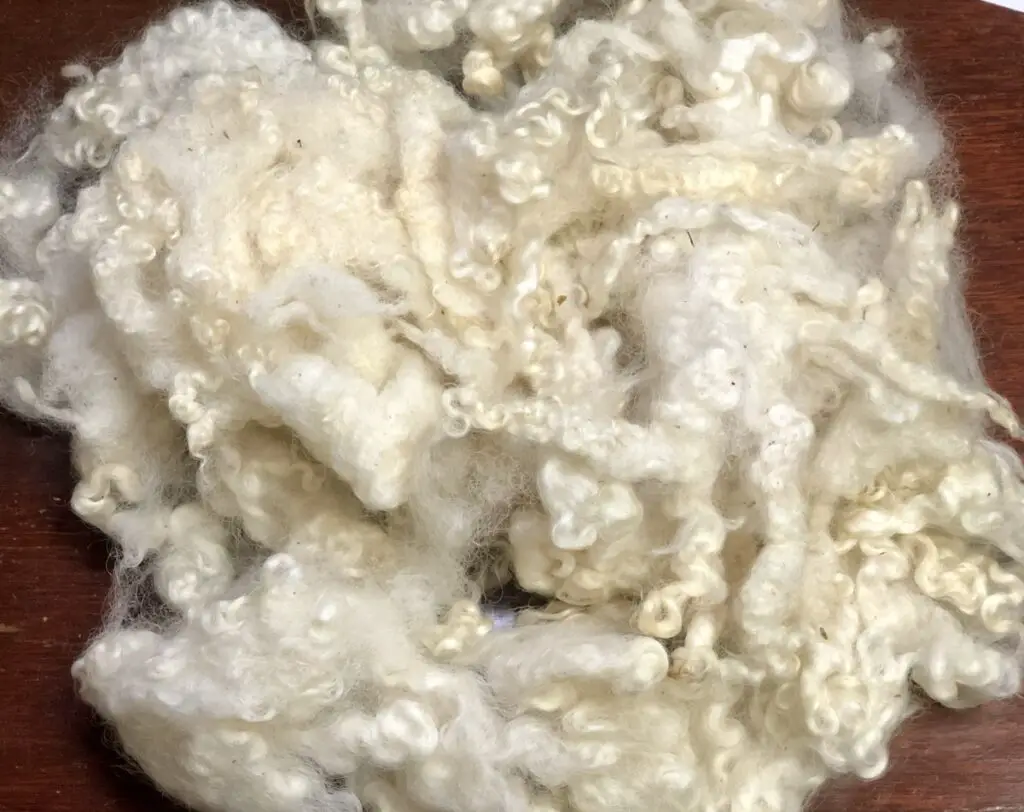
Before we get started with talking about why wool is itchy, we need to dispel a myth about wool.
It is extremely rare for someone to be allergic to wool itself. Most people that say they are allergic to wool are actually allergic to the lanolin that coats the wool while it’s still on the sheep.
However, wool that has been processed has the lanolin thoroughly washed out of it. Therefore, lanolin shouldn’t be a problem.
So, the skin irritation has to be caused by something else. If that’s the case, then why is wool itchy?
When talking about why wool is itchy, it comes down to the structure of the wool itself.
There are three things about wool that contribute to the itch factor. These factors are micron count, staple length, and quality.
Don’t worry about those weird words I used, I’ll explain it all so you know exactly what I’m talking about.
Micron Count
Not many people think about wool in its raw form, we’re used to seeing it processed into clothing or yarn.
But in its raw form, wool is just hair. Sheep hair. I know, super weird to think about, but it’s important to know this because it explains why wool can make you itch.
When hair grows, it forms a cuticle which, for lack of a better word, is scaly. That’s why your hair feels sticky if you run it through your fingers the wrong way.
The thicker the hair, the larger the cuticle which means the more pronounced the scaliness. This means, the thinner the hair is, the softer the hair.
This thickness and thinness of wool is what’s called a micron count. That’s because the diameter of wool is so small that is has to be measured in micrometers, aka microns.
There are 10,000 micrometers for every centimeter. That’s how small we’re talking.
But, what does all this science have to do with how itchy wool is?
The butter zone for soft wool comes if the micron count of the wool is less than 24 microns.
Wool has a range of micron count that is considered the norm for that specific breed of sheep. For example, Merino wool ranges between 15-24 microns. If it exceeds this count, the wool isn’t considered to be pure Merino.
Not every sheep breed falls into this butter zone. So, knowing this can help you choose wool that won’t cause skin irritation. Later on in this post, I’ll talk about four sheep breeds that are right smack dab in the zone of softness.
Now let’s talk about staple length.
Staple Length
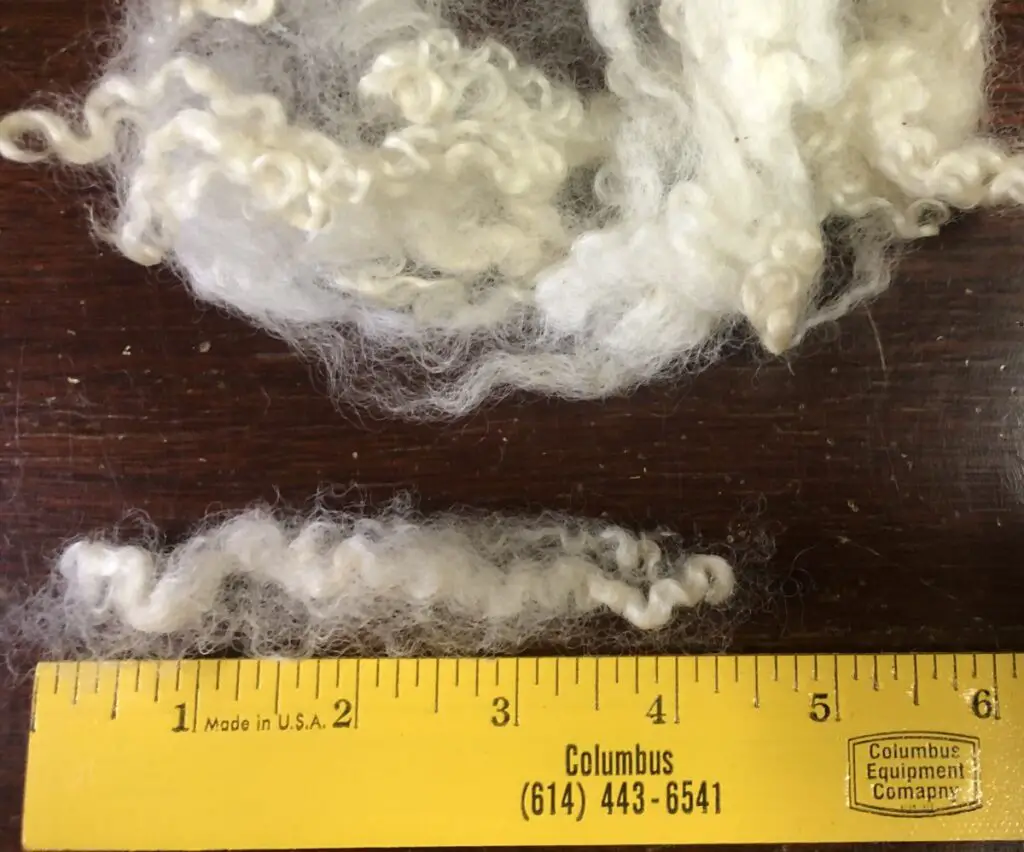
Staple length is just a fancy term for how long the wool is when it’s shorn off the sheep from the cut end to the tip.
Just like people, wool grows at different rates for different sheep.
Some sheep have really fast-growing hair which means their wool is really long when it gets cut off in the spring.
What does it matter how long the wool is, though?
Well, when wool is spun into yarn, it’s twisted to add strength. When it’s twisted, the cut ends of the wool will poke out of the yarn.
If the yarn is made out of wool with a short staple length, the cut ends will poke out more frequently which will cause more skin irritation.
So, the opposite is also true. If the wool has a long staple length, the cut ends won’t poke out as much which makes a smoother, softer yarn.
Just like with micron count, staple length comes in an acceptable range. For Merino wool, 2-5 inches is the acceptable range.
Quality
Last but not least, the quality of the manufacturing is a huge factor in how itchy wool is, and here’s why.
As you already know, micron count and staple length are what make wool soft. But, the types of wool that have these qualities are often expensive.
Manufacturers try to cut costs by using lower-quality wool which means coarser, shorter wool.
Before industrialization, it was extremely difficult to make yarn out of short fibers. But, through technology and machinery, it has become much easier.
So, buying a yarn or clothing product from somewhere that doesn’t specialize in wool products might result in itchier yarn.
One last note about making quality yarn.
Yarns that are spun by hand by an individual are usually much fluffier and softer than commercial yarn. This is because spinners have to use longer staple lengths than commercial mills. Longer staple length equals softer yarn.
And there you have it. The magic recipe for super soft yarn is using a long, thin, high-quality wool.
Now that we know the recipe for softness, let me tell you about some wool breeds that make super soft wool. If you buy a product made out of any of these wools, you’re in for a soft, fluffy treat.
4 Soft Wool Breeds
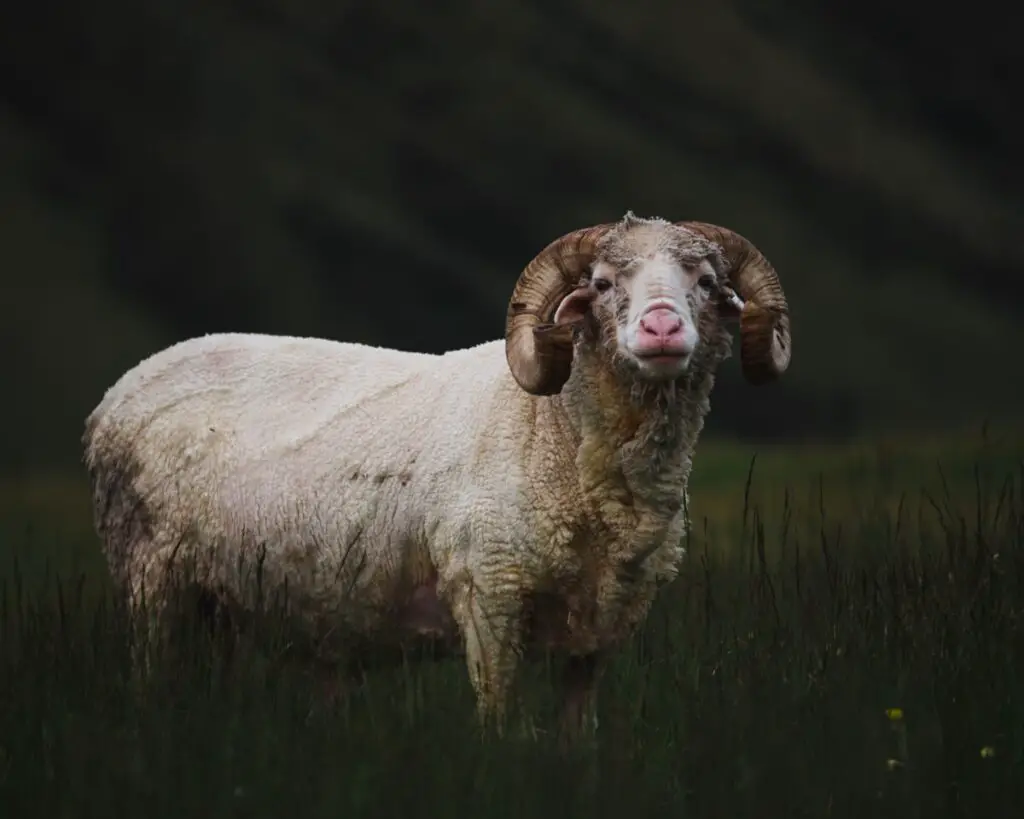
Alright, time for the fun part, talking about sheep. Sheep, and their wool, come in all shapes and sizes. Plus they’re super cute.
Below I have four wool breeds that are soft on the skin, but if you’re looking for more, I have a post about 23 different wool sheep breeds, check it out!
So, let’s start talking about some wool that follows the recipe of having a low micron count and a long staple length.
1. Merino
The one, the only, the Merino. We’re starting off with the big dog.
If you buy something made out of wool, odds are it’s made out of merino.
Merino is the breed of wool that is most commonly used to make wool garments, and with good reason.
Merino wool has a micron count between 15-24. So, even at its thickest, Merino wool is super soft.
Additionally, Merino wool has a staple length between 2-5 inches. Which, for wool, is awesome.
Merino has become the golden standard for soft wool, but there are many other breeds of sheep that produce amazingly soft wool.
2. Rambouillet
Rambouillet sheep are the distant French cousin of the Merino. I will admit, I’m a little partial to Rambouillet sheep because I used to raise them. They are so stinking cute.
Anyways, getting down to the wool. Rambouillet has a micron count and staple length very similar to Merino.
The staple length range is 18.5-24.5. While it doesn’t go quite as thin as Merino, it’s still below that range of being perfect for next to skin garments.
The staple length is between 2-4 inches. Again, not quite as long as Merino but still a great length.
As I said, I’m partial to Rambouillet, but the biggest difference to me between Rambouilet and Merino is that Rambouillet is much easier to spin. But, this is subjective and will vary from spinner to spinner.
3. Cormo
Next up, Cormo.
Cormo is a cross between Merino and Correidale sheep. You can see that most high quality wool sheep are related to Merino in some way, but, they all have subtle differences that make them unique.
Cormo comes in with a micron count between 17-25. On the higher end of the spectrum of softness, but on average lies below the needed 24 microns.
The staple length range is actually quite small for Cormo, it ranges between 3.5-4 inches. So, it will longer on average than many other wools because of this short range.
4. Targhee
Targhee are great hardy sheep that also happen to produce some super soft wool which helps keep them nicely insulated in the cold winters.
Because they’re hardy sheep, they have a micron count range of 21-25 which is on the higher end of our needed 24 or less.
They have a staple length of 3-5 inches which will help make up for the slightly higher micron count.
This breed of sheep is a great, more durable alternative to Merino.
Wool Alternatives
Now, if you’ve gone through this whole article and you still aren’t convinced that wool is for you, I compiled a list of some wool alternatives that are super duper soft.
There are also numerous plant based alternatives but, plant based alternatives usually have very different properties to wool than other animal fibers do. There are also many other animal fiber alternatives to wool that I don’t have time to mention here.
Keep in mind, that although the fibers listed below are similar to wool, they will have different properties in terms of breathability, durability, and moisture wicking.
The other thing to remember is that none of these fibers are as accessible as wool which means they’re going to be more expensive. But, if they’re what you’re looking for, they’re definitely worth it. Let’s get to it!
Angora Wool
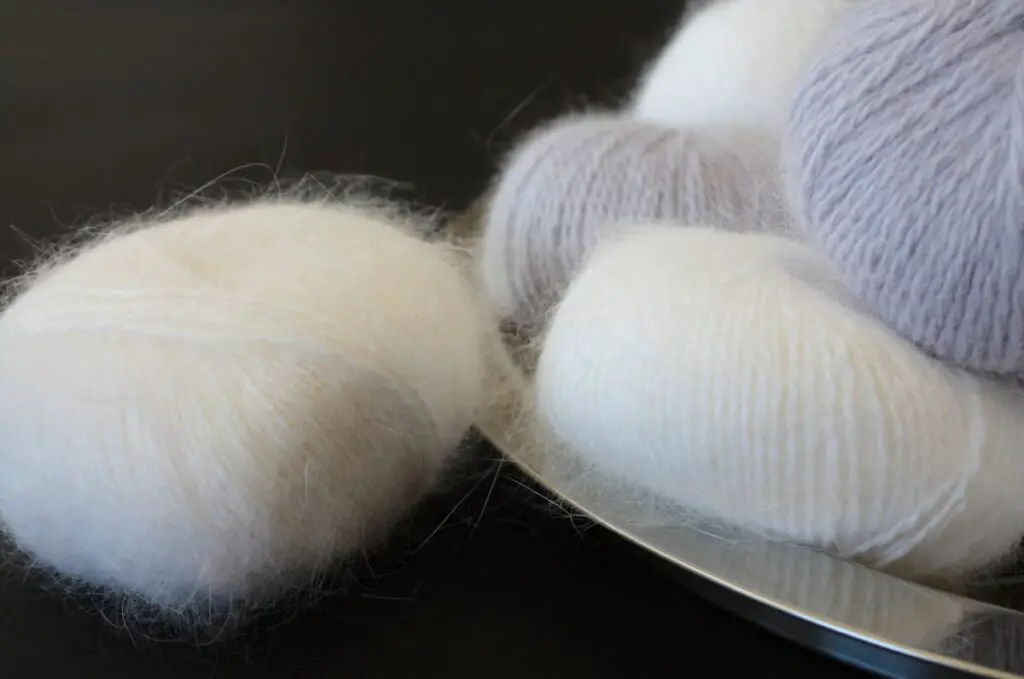
This one has a little bit of a deceptive name. While it’s called wool, it actually comes from the fur of an Angora Rabbit.
Angora Wool is known for its softness and for creating a fuzzy ‘halo’ around whatever it’s made into.
Angora fiber is extremely light and warm because the hairs have a hollow center. However, Angora is not as breathable as wool and it doesn’t have any natural elasticity.
Because of these reasons, and the fact that it’s expensive, Angora is usually mixed with other fibers, mainly wool.
Mohair
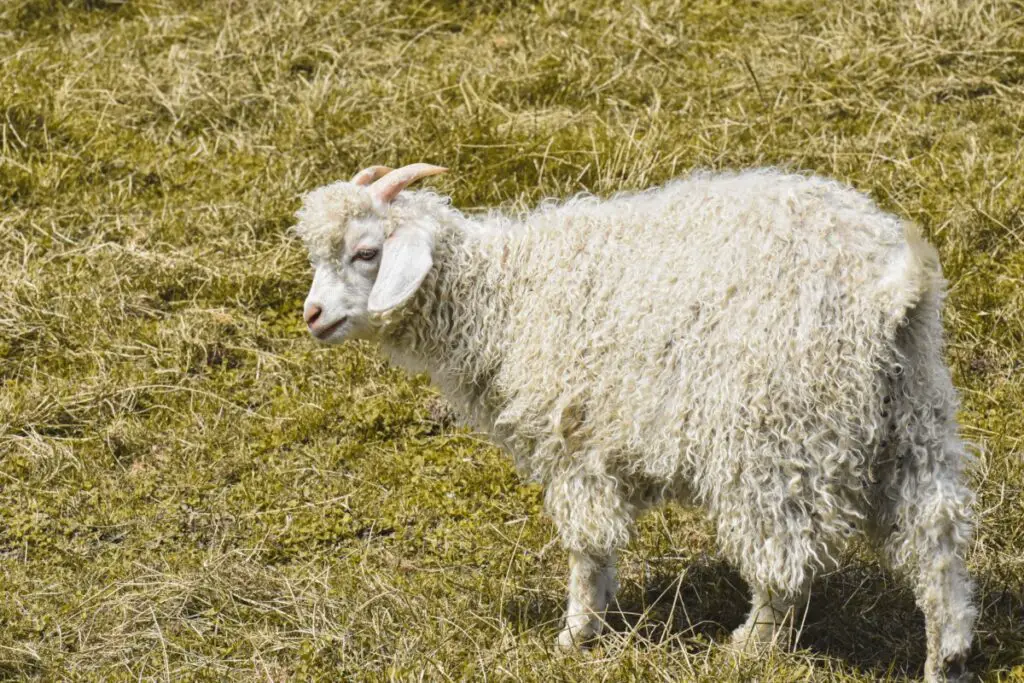
Mohair is the fiber produced by the Angora breed of goat. Now, wait a minute, didn’t we just talk about Angora?
Can’t get anything past you, can I?
The previous section talked about Angora Wool which is produced by the Angora Rabbit, Mohair is produced by the Angora Goat.
Clear as mud, right? Don’t ask me why they couldn’t just name them two different things.
Anyways, Mohair has many of the same qualities as wool but is best known for its exceptional luster and sheen.
It has a micron count between 25 and 45. But, Mohair has a unique quality that makes it feel softer than wool of the same micron count.
All hair, including wool, has scales on its surface which makes it grippy. The scales on Mohair, however, are not complete scales. This means that the hairs are smoother and softer which accounts for their shininess and softness.
Other than the sheen, Mohair operates about the same as wool in every other category.
For a complete breakdown, check out my post Mohair vs Wool.
Cashmere
Cashmere is one of those fibers that is known across the world as a luxury fiber.
Cashmere comes from a variety of breeds of goats, namely Cashmere and Pashmina.
These goats actually grow two coats. The outer coat is thick and coarse and the fibers are often called guard hairs.
The inner coat refers to the undercoat that these goats produce during the winter months. It’s soft and downy and is what is referred to as Cashmere.
However, because you have to seperate the fibers of these two coats, the process of gathering Cashmere is more labor-intensive than other fibers which contributes to why it’s so expensive.
Cashmere is very warm, luxurious, and moisture-wicking. The main difference between Cashmere and wool comes from the drape that cashmere fabric has.
By drape, I mean how the fabric lays when you wear it. Wool is springy so when it’s draped it kind of stays the same shape. Cashmere has a similar drape to silk, it molds itself very easily to whatever is underneath it.
If you want some more information, I have a post that compares cashmere vs wool.
Alpaca
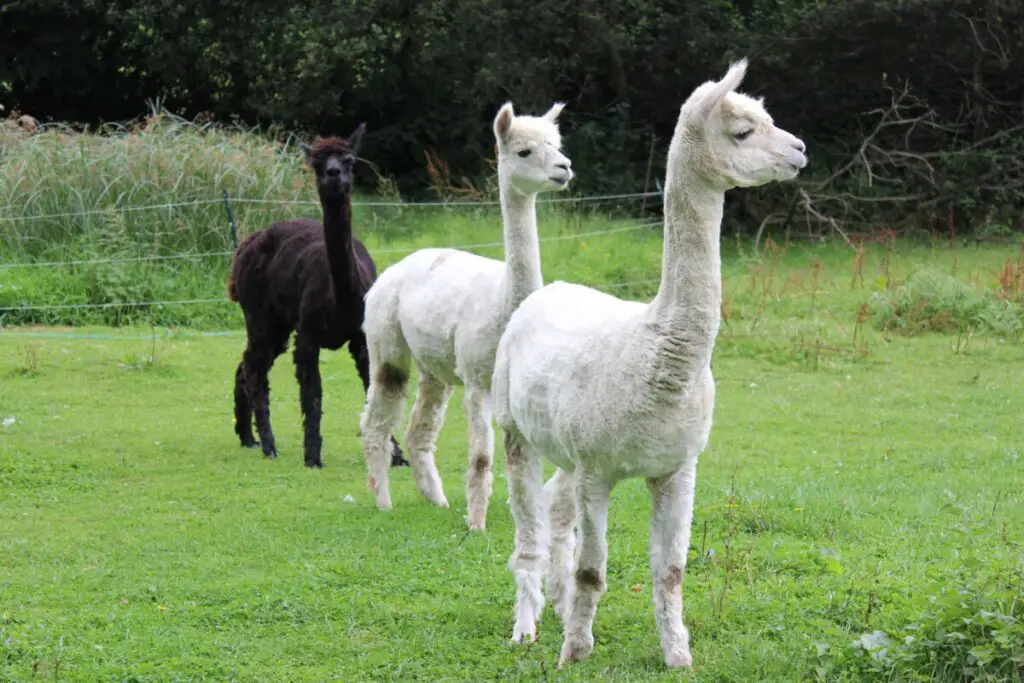
Last but not least, we have the versatile Alpaca. Although it’s often confused with llamas, alpaca is a separate species that produces very soft fiber.
There are two types of alpaca fiber which is produced by two types of alpacas: Suri and Huacaya.
Suri fiber is more similar to silk than wool. It has a very long staple length and great drape. Suri alpacas are not as widely raised as Huacaya Alpaca.
Huacaya Alpaca produce fiber that is extremely similar to wool. It has a micron count ranging between 18-25 and has natural crimp like wool which makes it springy.
Alpaca has all the same characteristics as wool but Alpacas don’t produce lanolin. So, if you have a lanolin allergy but still want the wool experience, Alpaca is a great option.
The one downside to Alpaca is that it’s almost too warm. A lot of people say that they get too warm wearing fleece.
For a more thorough explanation, check out my post that does a side-by-side comparison of alpaca vs wool.
Wrap Up
And that’s that. You’ve gone from why wool is itchy to less itchy alternatives to wool.
Wool can be itchy if it has a high micron count which makes it a coarser wool causing skin irritation.
Wool made with fibers that have a short staple length will poke out from the yarn and irritate your skin.
Low quality products are usually made with coarser shorter wool which makes them even itchier.
Let’s not forget about our four breeds of sheep, Merino, Rambouillet, Cormo, Targhee. They produce soft lustrous wool that make for lovely wool products as long as they’re treated appropriately.
If you try to find wool products that are made with low micron counts and long staple lengths but still find wool itchy, you can also look for products made out of wool alternatives.
The alternatives we talked about were Angora, Mohair, Cashmere, and Alpaca.
There are also numerous plant based alternatives and even more animal based alternatives.
The main thing to keep in mind with these alternatives is that they are not as widely produced as wool and are therefore harder to find and more expensive.
All this new found knowledge can be used to buy wool products smartly but it can also be used when planning your next crafting project. So, with that in mind, go make something awesome!

